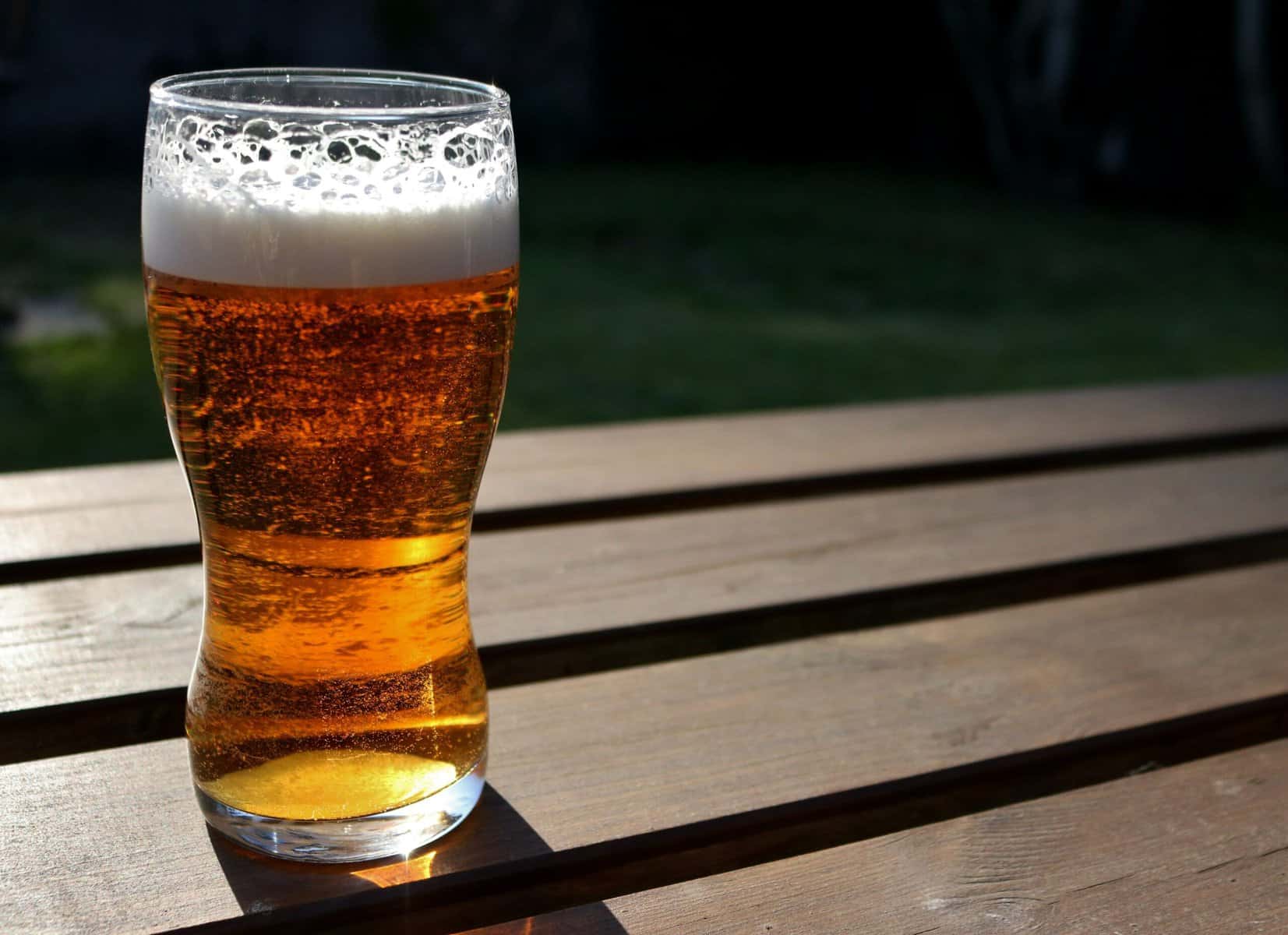If you have followed my blog at all you will know that I love Brew in a Bag. I think it is simply the best invention since pop up toast. Why bother spending all the money to buy great big convoluted brewing systems when you can do BIAB?
Most people will claim it is because with most Brew in a Bag systems you have to brew outside. But nowadays with Electric BIAB systems you

I do both…. I brew on a traditional brew in a bag system that uses a kettle on a turkey fryer, powered with propane and uses a brew bag. And I brew on electric brew in a bag systems, also known as all-in-one systems.
And the results i.e. the taste and quality of the homebrew is as good as or better than the brew made on the larger 2 & 3 vessel convoluted systems. This is most likely due to all of the extra steps that are involved with the other systems. The more steps involved the more of a chance you have of messing it up.
OK so you know I love Brew in a Bag… now in today’s article we are going to look at How to brew on the electric systems on the market.
But first a quick video overview of what you are about to learn…
But First What Does Big Robb Brew Awwn?
I personally have the Brewer’s Edge Mash and Boil and I love it. In fact, I really do not see why anyone would spend the extra money for some of the more expensive all-in-one systems out there.
The Mash and Boil (M&B) does it all…
The base model is what I brew on but you can now buy the updated model that includes a recirculating pump so you can recirculate during the mash.
Which is cool and all but if extra $100 for the updated model is too much for you to start out with; you can always just pour the mash water into a pot and pour it back on top of the mash, basically recirculating the mash manually.
Either method will work just fine for making delicious batch of the brew.
If you are interested in the Mash & Boil You can check out my review of it Here on this post.
I have also brewed on the Robobrew. Which is what I would call a poor man’s GrainFather.
It basically has everything the Grainfather does except at a lower price. And the quality of the Robobrew is also very good on it.
So once again I do not see why anyone would buyer higher priced items that are the same quality and do the same thing as the lower priced systems such as the updated Mash and Boil or the Robobrew, which is slightly more expensive than the update Mash and Boil. I did enjoy brewing on the Robobrew, it’s a fun little system also.
Myself if I were buying a new system, I would still go with the Mash and Boil. I would get the updated version with the recirculating pump.
The reason is simply because the quality is great and for the money you spend you simply cannot beat it. The only difference between it and the others on the market is they appear flashier; but do the same thing.
Here is the link to my post of a review of the mash and boil again.
OK so regardless of which system you go with the principles are all the same… So lets get into them.
Which Recipes Should You Use?
You hear a lot of hype about whether you should change an all grain recipe into a biab recipe. The answer is don’t bother. There is no need.
I have always used standard all grain recipes on my beers and they have turned out great, no problem at all.
So where do you get the recipes?
Well you can check out the recipes on this site. I have a post of some of my favorite all grain recipes I brew and you are welcome to use the recipes listed there. I do add to it from time to time so book mark it and check back for new ones I add. Click here for my All Grain Beer Recipes
One of the best ways I have found to get a hold of new recipes that are tried and true and proven to make nice beers is to buy all grain beer kits.
Yup they make them to… and the cool thing about the all grain beer kits is that they come with everything you need to make the beer… all of the ingredients AND the recipe and instructions.
And if you love the homebrew it makes you can simply keep the recipe that came with the kit and go down to your local homebrew supply store and pick up the ingredients listed on it to brew it again.
The other thing that is cool with these beer kits is that most places allow people who have purchased them to rate them and comment about them on their site. So before you buy you can see what people think of the beer.
My favorite place to buy all grain beer kits is Adventures in Homebrewing. They have a great selection of pretty much any beer you could ever want and the recipes make good brew.
Click here for a review I did on Adventures in HomeBrewing.
How to Brew on These Systems
OK brewing on these all-one-systems is very simple.
If you have never brewed before I do recommend that you check out my post How to Homebrew. It covers EVERYTHING you need to know to make good beer.
And if you have never Brewed in a Bag before than I recommend that you check out this post on how to do so. The principles are the same for the Electric BIAB systems as the non-electric.
So let’s walk through a typical brew day for you:
First off you have your recipe and ingredients already to go.
You have cleaned and sanitized your equipment and brew space.
Following the recipe you heat up as much mash water as the recipe calls for. You heat it to strike temperature. Which is the temperature that you are going to mash in at or add the grains. Typically, this will be a few degrees higher than the temperature you are going to mash at. By adding the grains and stirring them you are going to lose some of your heat. You will figure out over time how much heat your system will lose from mashing in. But to start with shoot to have your strike temperature about 5 – 10 degrees higher than what you want to mash at.
Once the water has heated up to strike temperature, it is time to mash in. You will put the grain basket that comes with the system into the water. I sometimes actually still use the brew bag as I find I get better efficiency. This is because the bag is more porous than the basket.
Once you have placed the basket or bag into the water, slowly pour the grains into it. Go slow and stir as you go. You want to make sure that no dough balls form. Dough balls are clumps of grain. Once all of the grain is into the kettle stir it good to again make sure no grains have clumped together.
Now if you have one you can turn on your recirculating pump and set your timer for 60 – 90 minutes. Your recipe will tell you how long you should mash for. You of course are setting and maintaining the temperature of the mash with the built in thermostat on your system.
Even if you have a recirculating pump I highly recommend that you stir the mash every 5 minutes or so. The most important part of the mash is the first 20 minutes, as this is when most of the conversion happens, so stir more often during this time.
Once the mash is over you now raise the grain basket out of the kettle and it will sit nicely on top of the kettle allowing the wort (liquid) to drain out of the basket and back into the kettle.
Now is when you will sparge. Sparging at this point will do two things:
1) The first thing it will do is allow you to rinse all of the sugars and starches out of the grains into the kettle. Making sure you are getting all of that goodness into the kettle for the boil.
2) The second thing this does is it allows you to bring the liquid level in the kettle up to the pre-boil level. You will need to figure out what your boil off rate is. Meaning if you boil water in your kettle for an hour how much is boiled off or evaporates? You should do this before you brew. You will need to know this so that if your recipe tells you that you should finish the brew day with 5.5 gallons of wort and your system boils off 1 gallon an hour, than you know that you need to bring your pre boil level up to 6.5 gallons.
Sparging is very straight forward. Simply take some warm water and slowly pour it over the grain basket. Stop once the level in the kettle has reached your pre-boil level.
Remove the basket and dispose of the grains.
Now you turn up the heat on your system as high as it will go and get the liquid (wort) boiling.
Follow the instructions on the recipe for how long you boil the wort.
You will also follow the instructions on the recipe for when to add hops during the boil. With these systems I prefer to put the hops in muslin (hop) bags and tie them to the side of the kettle insisted of just throwing the hops directly into the kettle. This allows for a much clearer looking and cleaner tasting beer as all of the hop debris stays in the bag.
Now Simply Carry on As You Would With Any Brew Day
The rest of the process is the same as any other brew day:
1) You will need to chill your wort down to pitching temperature.
2) Ferment the homebrew the same way you would any other beer.
3) And of course bottle or keg the brew when it is time.
Again if you are new to brewing and are not clear on any of those steps this post will help you out.
I trust you found this post helpful and now have a good understanding of how an electric BIAB system and brew day works.
Again if you want to do this type of brewing yourself, check out my review of the Brewer’s Edge Mash and Boil.
If you have any questions let me know in the comments section below and I will be happy to help you out.
Cheers my brewing amigo… Big Robb, well “He Gone”!


This isn’t biab.
You can’t do biab without a bag.
Thanks for the comment Tom, the concept is identical, if you prefer remove the basket and use the bag, works great and many do just that as they claim better efficiency. Cheers